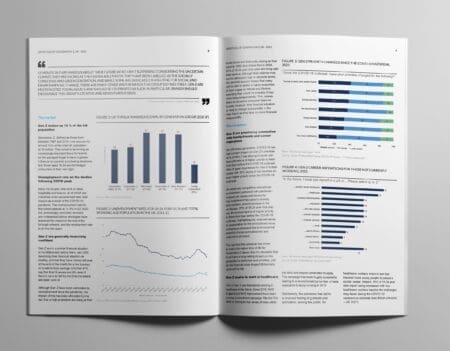-
Articles + –
Better US economy means higher consumer confidence: How are bank marketers responding?
The GDP has been growing consistently in the past few quarters, the unemployment rate continues to decrease, consumer confidence is up, and gas prices are going down; from an economist’s point of view these are all signs of a recovering economy. However US consumers hesitate to believe that this will last due to costs out of their control such as food, gas, and healthcare. While they are more confident than last year about their personal financial situation, according to Mintel’s Consumers and the Economic Outlook US 2015 report, US consumers are not optimistic that the economy is stable. Despite pessimism about the economy, they have made drastic changes in their financial habits over the past years. As such, US consumers are more likely to have a positive perspective on their financial situation. As of October 2014, the majority say their current financial situation has not changed from 2013, but 42% of US consumers say their financial situation will improve in 2015 . Consumers indicate that saving money is one of the factors that impact their economic success, but they also indicate that they want help in setting goals, managing their way to achieving those goals and setting and managing day to day budgets. As consumer mindsets and goals have changed, however, bank marketing campaigns are missing an opportunity to appeal to this new frame of mind.
The two products that serve as the first point of entry into a financial institution – checking and savings accounts – are also the two products that can help consumers with day-to-day financial management. In reviewing checking offers across marketing channels, both checking and savings accounts are promoted primarily based on the incentive:
- In direct mail, the incentive was the most prominent and most emphasized aspect of the offer. Direct mail offers, with the luxury of the most space to work with compared to other channels, also promoted the various services that come with the account. The focus, however, was largely on the self-serve options such as ATMs and online and mobile banking, rather than on providing help and guidance.
- Email offers also emphasized the incentive, as did online offers, although online ads included the added emphasis of free checking.
- Mobile ads rarely promoted checking accounts, but when they did, incentives were rarely used.
42% of US consumers say their financial situation will improve in 2015
Obviously consumers like incentives – especially cash – because it speaks to their mindset of saving money, and getting a deal. Since consumers see little differentiation in pricing and functionality of checking products, the cash bonus speaks loudly. Secondary messages, however, do not seem to consider consumers’ general mindset and goals related to finances. Since a checking product is often the customer’s first experience with the bank, the offers could provide messaging designed to give consumers confidence that the bank can help them in financial matters and provide guidance.
Savings offers tend to focus on the rate offered and how easily and quickly consumers can reach their savings goals. Offers typically focused on the “ease” of savings, by discussing setting up automatic deposits or the online tracking tools offered through the bank. Savings offers, however, leave it up to the consumer to establish the goal and included little focus on the planning process. Financial planning services are typically reserved for premium accounts. In communication about premier accounts or their benefits, banks are much more likely to use key words such as “relationship”, “guidance”, and “service”, in an effort to stress that the bank is there to handle more than just transactions. Most importantly, the messages stressed working together, which serves to remind the customer that the bank is there to help.
With the improvement in the economy, consumers are beginning to feel better about their personal finances and are hopeful they will be better off in the years to come. Despite this, however, consumers express a desire to save more and want to set up medium and long term goals. Banks are uniquely poised to help consumers, more so than even investment firms. According to Mintel consumer research, 67% would like to use PFM tools to help them manage their money on a day-to-day basis, and 58% of consumers are interested in using a bank financial adviser to help develop and execute financial planning. With the recent changes in consumer attitudes and expressed desires, an opportunity exists for banks to stand out from the competition and craft messages that appeal to the new consumer mindset. Banks can provide more messaging about working on behalf of and with customers to make them feel that there is a relationship that goes beyond a mere transaction.
Susan Wolfe is the VP of Financial Services at Mintel Comperemedia, focusing on the banking and investment industries. Susan brings over 20 years of experience in marketing and research to her role at Mintel.
-
Mintel StoreGet smart fast with our exclusive market research reports, delivering the latest data, innovation, trends and strategic recommendations....View reports
-
Mintel LeapMintel Leap is a revolutionary new AI-powered platform that will transform your research process....Book a demo







































